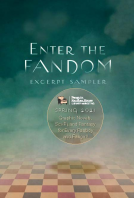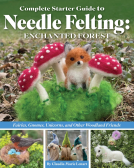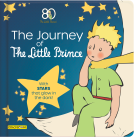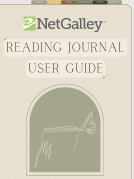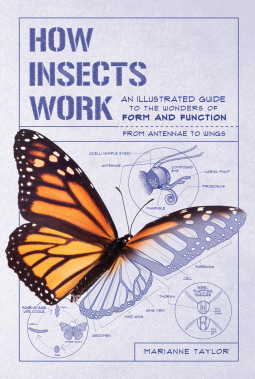
How Insects Work
An Illustrated Guide to the Wonders of Form and Function—from Antennae to Wings
by Marianne Taylor
This title was previously available on NetGalley and is now archived.
Send NetGalley books directly to your Kindle or Kindle app
1
To read on a Kindle or Kindle app, please add kindle@netgalley.com as an approved email address to receive files in your Amazon account. Click here for step-by-step instructions.
2
Also find your Kindle email address within your Amazon account, and enter it here.
Pub Date Apr 28 2020 | Archive Date May 12 2020
Talking about this book? Use #HowInsectsWork #NetGalley. More hashtag tips!
Description
This file is NOT currently available for Kindle. We apologize for any inconvenience. If you have difficulties with downloading, please email us (at publicity@theexperimentpublishing.com) for assistance or leave a note in lieu of a review rating.
The extraordinary inner-workings of the world’s amazing, adaptable insects
How Insects Work goes beyond the typical field guide to show us not only what insects look like but why. Arguably the most successful land animals—still going strong after five mass extinctions—insects have evolved a spectacular array of real-life superpowers to help them thrive in virtually every environment: Bumblebees’ wingbeats leave a faint electrical signal at each flower they visit to show that the nectar’s already been taken (see page 57), and houseflies defy gravity with tiny leg hairs that stick to the smoothest wall or ceiling (see page 69). In this in-depth, photo-filled handbook, discover the ways insects are even more astounding than you know—inside and out: Evolution, Exoskeleton and Body Segments, Senses, Circulation, Digestion, Respiration, Reproduction, Metamorphosis, Movement, and much, much more!
Available Editions
| EDITION | Other Format |
| ISBN | 9781615196494 |
| PRICE | $16.95 (USD) |
| PAGES | 224 |
Links
Featured Reviews
 Librarian 391714
Librarian 391714
Very informative resource. It was revealing to read about insects and to see the reasons behind how they operate and the vital roles they play in the life cycle. Photography was complementary and well done.
 Judy G S, Librarian
Judy G S, Librarian
An excellent and very interesting book, filled with wonderful and even unusual information on all types of insects. I was enthralled, and I can see all ages enjoying this book, children to adults. Definitely ordering it for our library.
 Reviewer 573286
Reviewer 573286
First off I should explain that I am an entomologist. I think this is an excellent book for two things. Adults that wish to become functionally literate in all the major and some even minor concepts in entomology, and as a textbook for a college introductory entomology class.
The images are fantastic and very informative and I cannot stress this enough...ACCURATE. Do you know how many bad insect images I see in entomology books? A great deal. These are not only beautiful but accurate and informative and stress the concept or organism being presented. I would say this is in no way a kids book but an older kid that's very into insects would enjoy the book.
How Insects Work is an adept and beautiful technical examination of insects and the mechanisms they have developed to interact with and survive in their various environments. Released 28th April 2020 by The Experiment, it's 224 pages and available in flexibound and ebook formats.
This isn't a field guide or just a collection of facts. Each of the entries contains isometric drawings and line art showing the engineering concepts and principles behind many of the functional physiological characteristics of different types of insects.
The layout is logical and easy to follow. The introductory chapter covers the ancient insect-like animals, the first arthropods with the family tree of modern day insects including a cool informative chapter on the carboniferous period 359 to 299 million years ago. The fossil arthropods represented include Arthropleura, a millipede that exceeded 7 feet (2m) in length! *Yikes* The following chapters "build up" structurally from the base up: the exoskeleton, movement, nervous system and sensory organs, feeding and digestion, respiratory and circulatory systems, reproduction, and more. Each is thoroughly represented, accurate, and very well illustrated and interesting. The photography and art are clear and beautifully rendered.
This would make a nice choice for all ages, entomology lovers, students of nature and biology, as well as artists and readers interested in technical drawing. Note: no drawing tutorials or instructions are included, but there are numerous well illustrated exploded drawings to study.
Five stars, very impressive.
Disclosure: I received an ARC at no cost from the author/publisher for review purposes.
 Tara H, Librarian
Tara H, Librarian
I received an arc of this title from NetGalley for an honest review. This is a really cool book about insects. There’s historical information, interesting information, great pictures and excellent illustrations about insects. Kids will really like this one.
Readers who liked this book also liked:
Silvia Moreno-Garcia
Historical Fiction, Literary Fiction, Sci Fi & Fantasy






